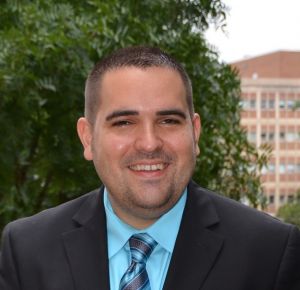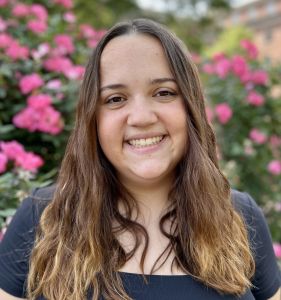UNC Researchers Awarded NSF Grant to Study How Algal Blooms Cause Air Pollution

In North Carolina, where lakes and rivers provide drinking water, fishing and recreation, algal blooms are becoming more common and more severe, especially during hot summers. Over the next three years, Professor Jason Surratt, his doctoral student, Samantha Bell, and their collaborators will conduct lab experiments and field studies, collecting air samples near freshwater blooms and analyzing them for particulate matter.
August 20, 2025 | By Dave DeFusco
The National Science Foundation (NSF) has awarded a $437,080 grant to a team of researchers in the Department of Chemistry and the Department of Environmental Sciences and Engineering in the Gillings School of Global Public Health at UNC-Chapel Hill to explore a surprising and little-studied threat: how water pollution from harmful algal blooms can affect the air we breathe. This three-year project is part of a larger, $1 million NSF collaborative grant with Professor Andrew Ault of the University of Michigan.
The project, “Collaborative Research: Determination of Secondary Organic Aerosol Formation from Cyanobacterial Harmful Algal Blooms Through Coupled Laboratory and Field Experiments,” will run through July 2028 and is led by Dr. Jason Surratt, the Cary C. Boshamer Distinguished Professor of Environmental Sciences and Engineering and Chemistry, at UNC-Chapel Hill. The work builds on the research of his analytical chemistry Ph.D. student, Samantha Bell, who is carving out new ground in environmental chemistry.
For years, harmful algal blooms, caused when cyanobacteria grow out of control in lakes, rivers and reservoirs, have been viewed mainly as a water pollution problem. They produce toxins that can sicken people and animals through drinking water, fish consumption or skin contact. But Bell and her colleagues are asking a deeper question: What happens when the gases these blooms release escape into the atmosphere?

It turns out that some of those gases, or volatile organic compounds (VOCs), may undergo chemical reactions in the air that create fine particulate matter, also known as PM2.5. These tiny airborne particles are smaller than the width of a human hair and have been linked to asthma, heart disease and other serious health problems.
“Most studies focus on the dangers of ingesting or touching harmful algal blooms,” said Bell. “But what’s been largely overlooked is inhalation exposure. We breathe every minute of every day, so if blooms are affecting our air quality, that’s something communities need to know about.”
Bell’s work zeroes in on four cyanobacteria-derived VOCs: β-ionone, β-cyclocitral, geosmin and 2-methylisoborneol. These gases are known to be released into the air during bloom events, especially when the water is disturbed by waves, wind or recreational activity. Once airborne, these molecules don’t remain harmless for long. In the atmosphere, they can react with oxidants—chemicals like ozone that constantly cycle through the air. The result is the formation of new particles that contribute to PM2.5 pollution. Understanding that process is at the heart of Bell’s research.
To mimic these atmospheric reactions, Bell uses a tool called an oxidation flow reactor. Think of it as a miniature, accelerated atmosphere in a metal cylinder. By pumping in the volatile compounds and mixing them with simulated atmospheric conditions, she can speed up chemical aging that would normally take days or weeks outdoors. In addition, Surratt, Bell and collaborators from the University of Michigan will conduct smog chamber experiments to mimic the atmospheric chemical evolution of these organic gases released from harmful algal blooms.

Inside the reactor, she studies how the compounds oxidize and whether they form aerosols when combined with other common airborne substances like acidified ammonium sulfate and calcium carbonate. These experiments not only shed light on how PM2.5 forms but also help Bell search for chemical tracers—distinctive fingerprints that indicate when pollution is specifically linked to harmful algal blooms. Such tracers could give scientists and regulators a powerful monitoring tool, allowing them to connect air quality issues directly to bloom events.
Insights gained in the lab will be put to the test in a field study at Grand Lake St. Mary’s (GLSM) in Ohio, a site known for its intense and recurring harmful algal blooms. The field study will bring together UNC-Chapel Hill and University of Michigan researchers, Dr. Judy Westrick of Wayne State University and Professor Stephen Jacquemin of Wright State University-Lake Campus. Using advanced mass spectrometry, Surratt and Bell will analyze PM2.5 at the molecular level, looking for chemical tracers identified in their laboratory experiments.
In North Carolina, where lakes and rivers provide drinking water, fishing and recreation, blooms are becoming more common and more severe, especially during hot summers. The state’s Department of Environmental Quality even hosts a Harmful Algal Bloom Reporting Dashboard to track events, encouraging residents to submit observations when they spot a bloom.
“We know these blooms are getting worse,” said Bell. “The more we understand how they affect our air—and our health—the better we can protect the people who live near them.”
The NSF grant underscores the importance of this research, not just for North Carolina but for regions across the country where harmful algal blooms are on the rise. Over the next three years, Surratt, Bell and their collaborators will conduct lab experiments and field studies, collecting air samples near freshwater blooms and analyzing them for particulate matter.
If they can successfully identify chemical tracers and quantify how much PM2.5 comes from bloom-related gases, the findings could inform public health advisories, pollution regulations and community awareness campaigns.
For Bell, it’s more than just an academic pursuit. “I grew up seeing these blooms and hearing about their impact on water,” she said. “Now I want to understand how they affect the air—and, ultimately, the people living nearby. That’s what drives me.”

